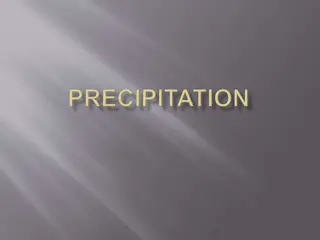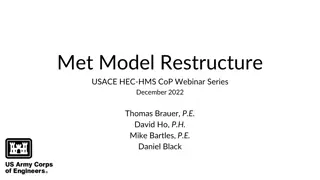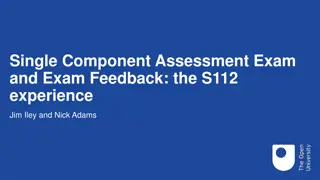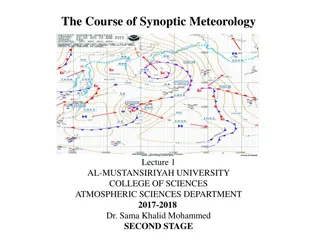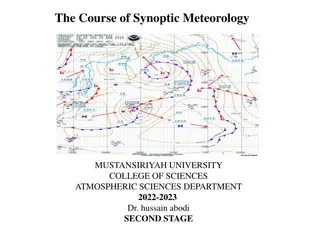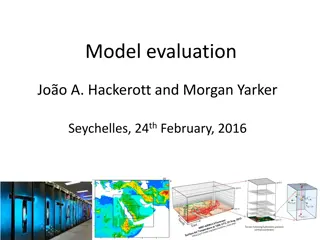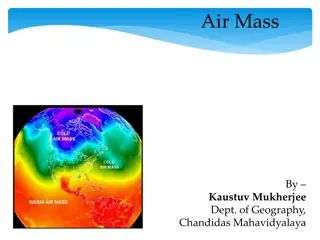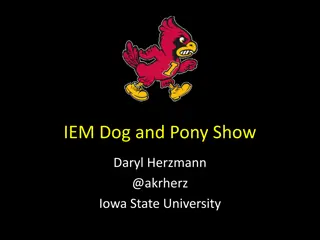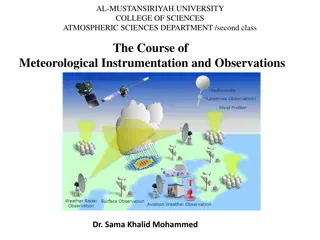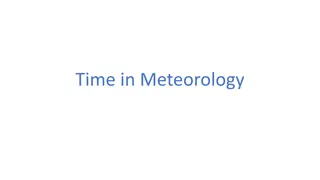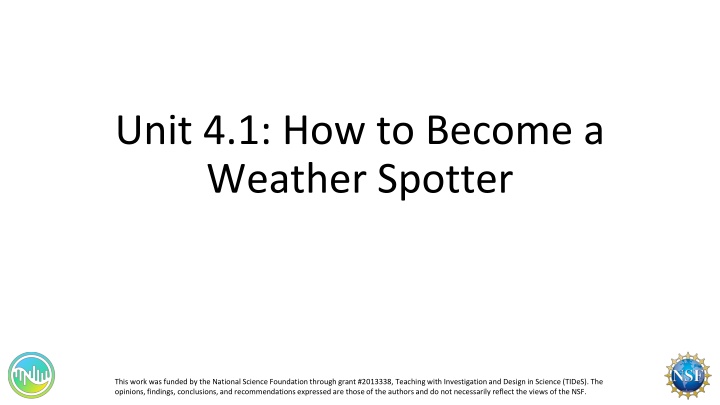
Become a Weather Spotter: A Comprehensive Guide
Learn how to become a weather spotter with this guide covering terms like relative humidity, dew point, and more. Explore the importance of local monitoring, weather prediction changes over time, and practical activities like exploring weather stations. Join in group discussions and presentations to enhance your knowledge about weather monitoring.
Download Presentation

Please find below an Image/Link to download the presentation.
The content on the website is provided AS IS for your information and personal use only. It may not be sold, licensed, or shared on other websites without obtaining consent from the author. If you encounter any issues during the download, it is possible that the publisher has removed the file from their server.
You are allowed to download the files provided on this website for personal or commercial use, subject to the condition that they are used lawfully. All files are the property of their respective owners.
The content on the website is provided AS IS for your information and personal use only. It may not be sold, licensed, or shared on other websites without obtaining consent from the author.
E N D
Presentation Transcript
Unit 4.1: How to Become a Weather Spotter This work was funded by the National Science Foundation through grant #2013338, Teaching with Investigation and Design in Science (TIDeS). The opinions, findings, conclusions, and recommendations expressed are those of the authors and do not necessarily reflect the views of the NSF.
Small Group Discussion Part 1 Write down what you know about the following terms: Relative Humidity Dew Point Temperature Adiabats Atmospheric Stability
Small Group Discussion Part 2 Write down what you know about the following terms: Relative Humidity Dew Point Temperature Adiabats Atmospheric Stability Discuss the following questions with your group: What is the importance of local monitoring? Explain how weather prediction and forecasting has changed over time. How do you think it will change in the future? What did you find interesting or surprising in this reading?
Break Out #1: Intro Exploring Weather Stations Each group will research different types of weather stations, how to make them, how to use them (best places to take readings, etc.) and will report back to the class.
Break Out #1: Exploring Weather Stations Part 1 Each group of students will be assigned a different type of weather stations: Thermometer, Rain Gauge, Snow Stake, Wind Direction Vane, Anemometer, Cloud Chart, Barometer, Hygrometer, Sling Psychrometer, Doppler Radar After researching, your group will explain: How to use this How to make this (if applicable) Best places to take readings/measurements Why this type of data is important to have Each person in your group needs to be able to explain the data to someone who has never seen it before and answer any questions they may have.
Break Out #1: Exploring Weather Stations Part 2 Presentations! Each group presents its findings and best practices to the class.
Break Out #2: How to Become a Weather Spotter New Groups! NWS Weather Spotter Brainstorm: Each group will be assigned a different severe weather type. Rainfall, flooding, and flash flooding Wind and wind related damages Extreme heat Fog Thunderstorms (wind gusts, lightning, and any damage) Students will brainstorm ideas and formulate a plan to set up a monitoring device on campus with various constraints. Use the campus map to find a location and take 2 pictures that you will use when your group presents their plan to the class.


